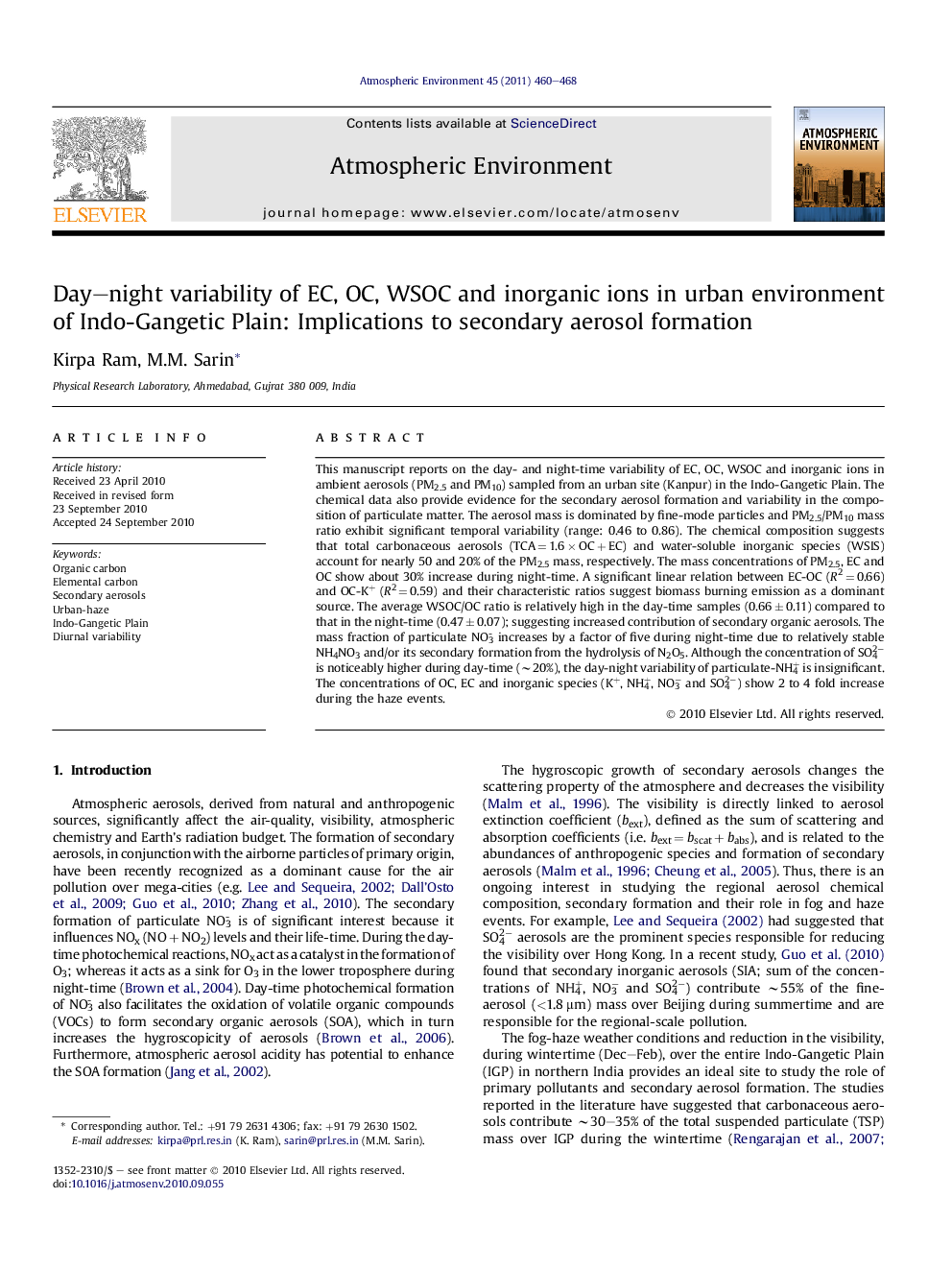| کد مقاله | کد نشریه | سال انتشار | مقاله انگلیسی | نسخه تمام متن |
|---|---|---|---|---|
| 4440184 | 1311050 | 2011 | 9 صفحه PDF | دانلود رایگان |

This manuscript reports on the day- and night-time variability of EC, OC, WSOC and inorganic ions in ambient aerosols (PM2.5 and PM10) sampled from an urban site (Kanpur) in the Indo-Gangetic Plain. The chemical data also provide evidence for the secondary aerosol formation and variability in the composition of particulate matter. The aerosol mass is dominated by fine-mode particles and PM2.5/PM10 mass ratio exhibit significant temporal variability (range: 0.46 to 0.86). The chemical composition suggests that total carbonaceous aerosols (TCA = 1.6 × OC + EC) and water-soluble inorganic species (WSIS) account for nearly 50 and 20% of the PM2.5 mass, respectively. The mass concentrations of PM2.5, EC and OC show about 30% increase during night-time. A significant linear relation between EC-OC (R2 = 0.66) and OC-K+ (R2 = 0.59) and their characteristic ratios suggest biomass burning emission as a dominant source. The average WSOC/OC ratio is relatively high in the day-time samples (0.66 ± 0.11) compared to that in the night-time (0.47 ± 0.07); suggesting increased contribution of secondary organic aerosols. The mass fraction of particulate NO3- increases by a factor of five during night-time due to relatively stable NH4NO3 and/or its secondary formation from the hydrolysis of N2O5. Although the concentration of SO42− is noticeably higher during day-time (∼20%), the day-night variability of particulate-NH4+ is insignificant. The concentrations of OC, EC and inorganic species (K+, NH4+, NO3− and SO42−) show 2 to 4 fold increase during the haze events.
Journal: Atmospheric Environment - Volume 45, Issue 2, January 2011, Pages 460–468